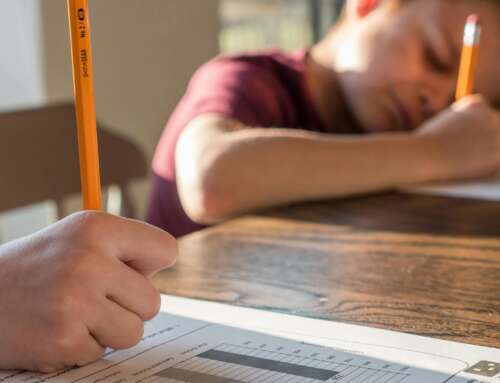Educator wellbeing has always been an uncertainty in the global school community. The 2020 pandemic highlighted more than ever before, just how much is expected from educators and how hard educators are willing to work and adapt, to serve their students. The missing piece remains as it has for far too long. What about educator well-being? Who helps educators through a crisis; and what in fact, is the best way to help?
1. Where are you thriving? Where are you stagnating?
Not often do we pause and reflect on where we’re thriving and what’s already working in our lives. It’s somehow easier to employ a deficit view of what isn’t working or what you still want to achieve. When you fail to acknowledge and celebrate your successes, you’re likely to feel less valuable and your wellbeing is often the first to suffer. Acknowledging what’s going well in your work as an Educator, can build your confidence and help you take realistic and constructive action that benefits all aspects of your life. Consciously noticing what isn’t working is also valuable, so you know what needs reducing, or deleting. Just be cautious that you don’t give this more weight, than is useful or necessary.
Imagine how much better you might feel if you ended each work day focusing on where you’re thriving and how far you’ve already come in Education, instead of where you’re struggling and how much you have to do tomorrow.
Take a moment to answer the following reset questions:
What is already working in your career right now? / Where are you thriving?
(Write it down, acknowledge it, appreciate and celebrate it).
Keep doing these as long as they continue to be helpful and constructive to you.
What isn’t working in your career right now? / What is a heavy weight on your Educator shoulders?
(Write it down, acknowledge it, take caution to it).
Stop or reduce your exposure to this. Ask for your supporters to help you if necessary.
What do you want to start doing as an Educator, that you think will help you reset and support your wellbeing?
(Write it down in order of how easy it is to start).
Start one step at a time. Choose the easiest reset practice and take one small step at a time towards it.
These questions are simple, yet, how often do we bring them to conscious awareness? Answering questions like these, then taking action on them, is crucial for sustainable wellbeing. They allow you to tailor a unique, self-driven and personal wellbeing reset approach that’s consistent with your own experience of life in Education.
2. Start your day with hope
As you walk into your classroom each morning, there will be reminders of all the ‘to dos,’ to get through (on top of the existing day’s teaching agenda). If you’re going through a particularly challenging time with a student or class dynamic, you may find yourself entering a negative thought spiral. The defeating thoughts can easily sabotage how you feel and drain your energy, before you’ve even started your day. Practicing optimism and consciously choosing to have a hopeful outlook for the day ahead, can recharge and energise you with what you need to not only survive your day but enjoy it. It takes as much energy to focus your mind on everything you’re worried about, as it does to focus your mind on all the things that might go right.
Try instilling a habit of greeting your colleagues and students each morning with a hopeful outlook. The flow on effect of optimism can start with you. Saying warm and friendly things like, ‘What a beautiful day’ and ‘We’re going to leave this classroom today stronger, smarter and better than when we came in,’ are all ways to wire your thinking with hope. Practicing a hopeful outlook consistently, can rewire your brain to feel happier and interpret life in a more positive way. When you’re in of a state of contentedness, you’re more likely to manage your feelings constructively. Achor (2010).
You can also start your day with hope by revisiting hopeful memories of your work as an Educator.
When was a time when you had an exceptional teaching breakthrough?
Who are the students you reached who felt ‘unreachable’ at the beginning?
When did you surprise yourself with an obstacle you overcame?
What are some of the compliments you’ve had from students, parents and other Educators?
Drawing upon past experiences of hope and optimism can lift you thought a difficult time and build stronger networks for hope in your brain. (Snyder et al., 2002).
To end your day with hope (which will help you start the next one accordingly), consider creating a daily optimism ritual before you leave your teaching environment. Try and imagine all the good things that might happen the next day, or think of something you’re looking forward to. Perhaps make a wish or hope that tomorrow will exceed all expectations and be a great progression from today. Whatever you do, see that good things are coming. Know that the fruits of your effort will grow, even if they seem small or distant right now.
3. Gratitude
We’ve all heard it, we all know it’s good for us, but why is it so hard to incorporate gratitude into our day? Some people say it seems to simple, to be effective. Others report it’s hard to remember. The act of noticing what’s going well is essential for your wellbeing. Your mind finds it joyful and relaxing to reflect on goodness. Plans will go wrong from one day to the next, usually minor, occasionally major. To keep the ‘colour of Educator life’ in balance, it’s important to recall and savour whatever is going well. After a while the brain builds pathways for noticing the better parts of your day and you naturally start focusing on positive and useful memories rather than negative, unhelpful ones. As a result, your wellbeing lifts.
Many Educators find keeping a gratitude journal on their classroom desk to write in before leaving for the day, helps build the practice into their routine. Others prefer to do it as a whole class activity (which is ideal) and others prefer to do it at home. However you choose to practice it, try and create a daily routine at the same time to help you remember.
The following questions can help increase your sense of gratitude. While the first question is ample, for those seeking a deeper experience of gratitude journaling, more questions follow.
-
Name three things that went well today.
-
Why do you think these things went well today?
-
Who are three people you were glad to see today?
-
What is one thing you can see in front of you right now that you’re grateful for?
-
What is one thing you’re looking forward to tomorrow?
After a few weeks of dedicated writing in a journal, you’ll find your mind quite naturally focusing on what’s going well.
4. Recharge your self-talk: Talk to yourself, like you would talk to a treasured friend
If you sit for a moment, you’ll notice the ongoing background chatter of your mind. It comes with a speed and automaticity that’s hard to curate and subdue – especially when those thoughts are negative and critical. When you’re met with a challenge, the nature of self-talk is often unhelpful, even hurtful. We can be quick to criticise ourselves unfairly. Negative self- talk can feel excruciatingly painful, draining your physical and emotional energy. It also feels very real – as if the thoughts are facts.
Take time to check in with the nature of your self-talk.
Does it support your work as an Educator?
Is it realistic given how many obligations you have in Education?
Is it fair on you and how much effort you’re putting into your job?
I know countless Educators, who under the pressure of the Pandemic, felt frustrated with themselves for finding the transition to online learning (not to mention all the other changes) overwhelming and confusing. They could see colleagues adapting differently or quicker. They told me they felt mad at themselves a lot of the time and would catch themselves in the middle of negative banter that went back and forth in their mind, thoroughly exhausting them.
Your feelings are attached to your thoughts, so it’s important for your wellbeing, that you keep your thoughts, and in this case, your self-talk in check.
One way to build more balanced self-talk is to talk to yourself with the same kindness and encouragement you would use with a treasured friend. Thoughts are going to enter your mind regardless. You can take the automatic ones, or you can consciously create ones that support you and focus on your strengths and abilities as an Educator. Be gentle with yourself by exchanging negative dialogue for optimistic and supportive thinking.
What kind, understanding and caring things you tend to say to colleagues or others in Education, when they come to you struggling with a student or classroom challenge?
What do you say?
How do you help them feel better?
See yourself as a gentle, encouraging advisor to yourself, rather than a harsh, ongoing critic.
5. Breathing
While it might be tempting to skip this strategy, there’s a reason it has a prominent place in the chapter. Diaphragmatic breathing has been empirically proven to improve attention. lower stress and increase physical and mental health. (Xiao Ma et al 2017). Breathing in oxygen and breathing out carbon dioxide through diaphragmatic breathing lowers blood pressure and slows your heartbeat, calming the nerves. (Zeccaro et al 2018). Regulated breathing techniques enhance wellbeing, providing you with a skill you can control and access at any time. It reduces stress, improves sleep and increases your physical health. (Oguz, S et al 2019).
Educators support the social, emotional and academic growth of young people. They carry the responsibility that their work matters a great deal, with the potential to be a life changing force in all their student’s lives. This is an enormous privilege and weight, to carry. Without daily rest and conscious rituals like diaphragmatic breathing, Educator wellbeing will suffer.
There are many different ways to learn to control your breath. Find the ways that suit you best and build a toolbox of breathing techniques. Try not to overlook breathing because it’s so simple and accessible. The evidence demonstrates it is a highly effective way to calm difficult feelings, relax and return to mental clarity. As you slow your breath, you slow your mind.
Diaphragmatic breathing and progressive muscle relaxation sequence.
When emotions become charged, your fight – flight- freeze reaction can dysregulate your breathing and your muscles increase in tension. The direct relationship between muscle tension and your sympathetic nervous and parasympathetic nervous system mean that when your muscles are tight and tense, your nervous system follows suit. When your muscles are soft and relaxed, you nerves are more settled too.
During progressive muscle relaxation, focus on different muscle groups in a specific order, tensing and relaxing each for several seconds, and taking deep breaths between muscle groups (McCallie, Blum, & Hood, 2006).
Each time you hold a muscle tight, aim for 10 seconds of tension and 20 seconds of muscle release time. Allow a moment between each muscle group to take three, slow and deep breaths.
Lie on the floor and close your eyes. Notice how your body is feeling. Is it tense? Is it relaxed? Is it somewhere in between?
Take in three slow, deep breaths, in through your nose and out
through tight pursed lips.
Start with your face…
Lift your eyebrows up as high as you can. Hold . . . and release.
Take 3 slow, deep breaths.
Smile widely like a clown in a sideshow alley and hold . . . now release.
Take 3 slow, deep breaths.
Lift your shoulders up high like you’re trying to touch your ears. Hold
. . . and release.
Take 3 slow, deep breaths.
Tense your arms straight and tight, making a fist at the end. Hold . . . and release.
Take 3 slow, deep breaths
Press your hands into the ground with your arms back against the floor like you’re trying to push them into the floor away from you. Hold . . . and release.
Take 3 slow, deep breaths.
Squeeze your bottom as tight as you can. Hold. . . and release.
Take 3 slow, deep breaths.
Tighten your thigh muscles. Hold . . . and release.
Take 3 slow, deep breaths.
Pull your feet towards you so your feet and calf muscles grow tight. Hold . . .
and release.
Take 3 slow, deep breaths.
Lift your arms up over your head and point your toes downward making yourself as tall as you can. Hold . . . and release.
Take 3 slow, deep breaths.
Repeat the sequence up to three more times and pay attention to how your body feels at the end compared to the beginning. A great way to end progressive muscle relaxation is with a guided meditation or visualisation.
Take care of yourselves Educators, we need you to be okay.
Excerpt from Madhavi Nawana Parker’s latest book, ‘Educator Wellbeing: Practical solutions to reset, recharge and recover,’ Worldwide release by Routledge, London in September 2020. More information via www.positivemindsaustralia.com.au

The Mental Health & Wellbeing of Young People seminar 2020 has gone digital. You can catch Madhavi Nawana Parker’s presentation Educator Wellbeing Practical Solutions to Reset, Recharge Recover by signing up to the online learning hub. You’ll have on-demand access to Australia’s leading experts and much more content than we could’ve squeezed into a single-day event! Learn more >>







Leave A Comment